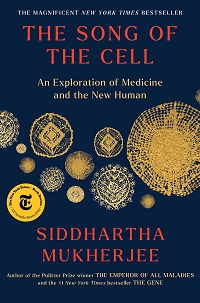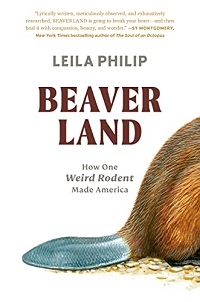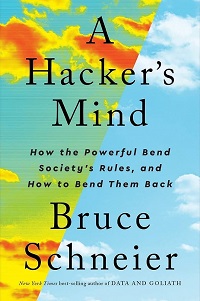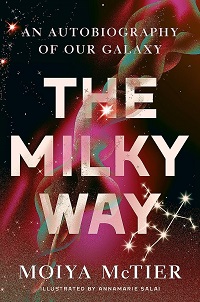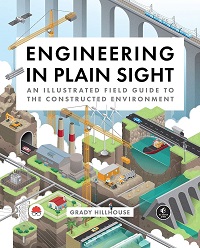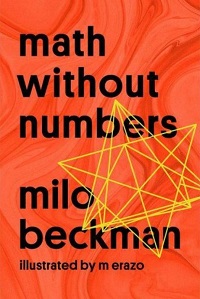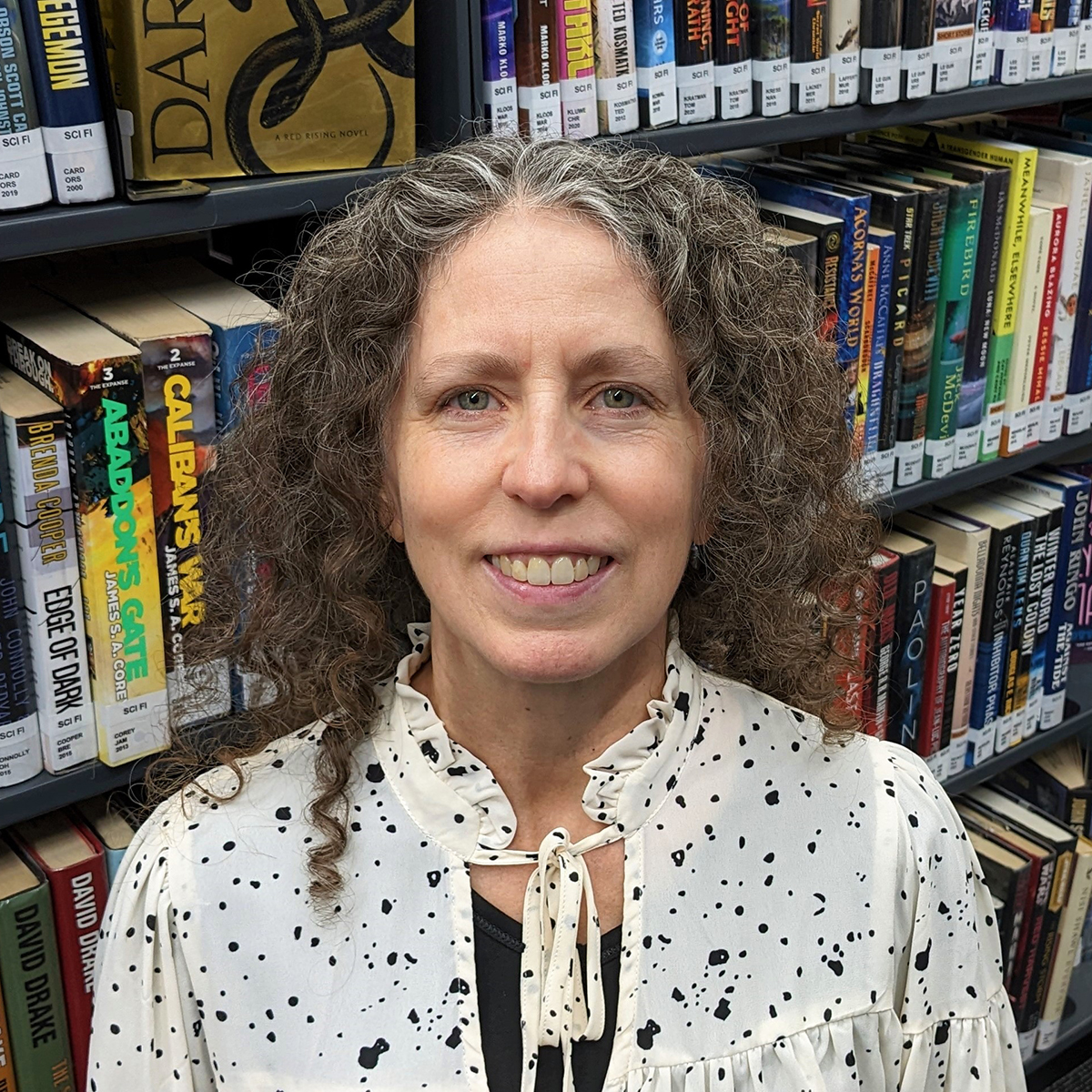Microorganisms, Machine Learning & More: Check Out Fascinating Books on STEM Topics for Adults
Posted on September 13, 2023 at 6:00 am

By Melissa Rhoades
By the time I was in eighth grade, my interest in science, technology, engineering, and math (collectively known by the acronym STEM) had plummeted. By high school, I was convincing lab partners to do biology dissections for me. I dropped out of physics halfway through, and I had to finish algebra in summer school—yuck.
I’m still lousy at science and math, but my interest in how these fields affect the world around me has grown. I’ve come to learn that you don’t have to be good at STEM to enjoy discovering some of the latest advances in these fields.
Many science writers are great at explaining complicated concepts in entertaining ways with easy-to-understand language. Our library shelves are well stocked with new and fascinating nonfiction books on topics including microorganisms, machine learning, and the Milky Way (and that’s just the Ms).
So as children dive back into STEM at school, why not dive in with them?
Here’s a small sampling of the many fascinating STEM-related reads for adults available in our collection. All the following titles were published between 2021 and 2023, representing some of the most up-to-date writings in these fields.
A Few Books to Check Out
The Song of the Cell: An Exploration of Medicine and the New Human, by Siddhartha Mukherjee, weaves medical history, new advances in biological research, and the author’s personal experiences to explore how the human body functions as a “cellular ecosystem.”
As an oncologist and researcher, Mukherjee is well positioned to take readers on a journey from early medical discoveries to the advent of vaccinations, blood transfusions, in vitro fertilization, stem cell research, and more. He also uncovers cautionary tales about the dangers of procedures and pharmaceuticals that get used before they are sufficiently understood. Intimate narrative moments are expertly interspersed with technical information. In the end, Mukherjee recommends that we think of cells not as isolated units but as interconnected beings in a cellular community. That, he believes, is how we will next transform the ways we treat disease.
Beaverland: How One Weird Rodent Made America, by Leila Philip, starts with the author’s love of beavers living in a pond near her home. When those beavers disappear, her fascination takes her on a years-long educational journey into the history of fur trapping, the practices of modern trappers, the biology and habits of beavers, and the ecology of river systems.
What Philip learns is that, without beavers, rivers behave very differently. She also learns that the natural habits of beavers can be harnessed to improve the health of river systems across America. Philip shares how beaver ponds not only act as “kidneys” that clean water of pollutants but also help prevent the types of flooding that global warming has made more and more frequent.
The Domestic Revolution: How the Introduction of Coal into Victorian Homes Changed Everything, by Ruth Goodman, will bring joy to fans of technological history, social history, and English history and culture. With engaging and exacting details, Goodman builds a methodical case for how the switch from wood to coal as a main source of fuel in Britain was not initiated by titans of industry, as typically thought.
Instead, Goodman argues that the change was initiated by housewives and domestic servants who made deliberate choices as far back as the 1500s. She shows how this switch to coal began profoundly changing everyday diets, cleaning regimens, and architecture even before it created the Industrial Revolution. Written by an expert living historian, this book reminds us that choices made by everyday people can profoundly affect the future.
A Hacker’s Mind: How the Powerful Bend Society’s Rules, and How to Bend Them Back, by Bruce Schneier, also encourages us to think about how today’s choices will affect the future. To demonstrate the social implications of machine learning (ML) and artificial intelligence (AI), cybersecurity expert Schneier steps back from computer hacking to look at how social systems have always been “hacked” by the rich and powerful.
The book argues that the more prevalent and powerful AI becomes, the more likely it is that powerful people will exploit it. Schneier also reasons that at some point, AI itself will “hack” human intentions, simply because machines “think” differently than humans. If we want to create an equitable future that we control, Schneier proposes that we need programmers and policymakers who will diligently police both algorithms and policies to avoid unintended consequences.
The Milky Way: An Autobiography of Our Galaxy, by Moiya McTier, provides an amusing and sassy introduction to astronomy told from the Milky Way’s point of view. With a doctorate in astronomy and dual degrees in astrophysics and folklore/mythology, McTier offers a unique way to look at the stars.
She imbues the Milky Way with an appropriately big personality full of wit, humor, and an occasional potty mouth. The book is packed with astronomy lessons based on what we “puny” humans know so far about our galaxy. It uses layman’s vocabulary as much as possible to explain insider jargon and also includes stories from the history of astronomy. McTier even explores what our modern versions of mythology might be about the stars.
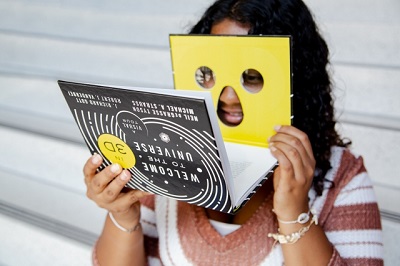
Welcome to the Universe in 3D: A Visual Tour, by Neil deGrasse Tyson, J. Richard Gott, Michael A. Strauss, and Robert J. Vanderbei, offers concise text combined with 56 full-color 3D images. Stereoscopic 3D glasses are built into the book’s back cover to allow you to enjoy viewing the 3D images of the universe without reading a word.
For those who do want more substance, a preface and introduction provide a good grounding for what you’ll be looking at. Plus, each photograph is accompanied by a written explanation. From Earth’s moon to objects billions of light years away, this book provides a planetarian show you can take home in your book bag.
Neil deGrasse Tyson’s latest book, To Infinity and Beyond: A Journey of Cosmic Discovery, will be available for check out soon!
Engineering in Plain Sight: An Illustrated Field Guide to the Constructed Environment, by Grady Hillhouse, feels delightfully like a version of Richard Scarry’s Busy, Busy Town for adults. Hillhouse, a civil engineer and YouTube educator, takes readers on a tour of typical engineering infrastructures that most of us take for granted even though they improve our daily lives.
From the electric grid to communication systems, roadways, dams, water treatment, and more, this guide explains the basics of how these systems work. It also teaches how to identify and “read” the engineered structures associated with them. Illustrations on almost every page clarify the text and include humorous details for observant readers. “Keep an Eye Out” segments provide extra tidbits to ponder.
Math Without Numbers, by Milo Beckman, makes a surprisingly fun read. Beckman’s prose is lighthearted and easy to engage with, explaining complicated mathematical ideas with simple language that’s easy to digest. His droll sense of humor had me laughing out loud more than once—an impressive feat for a book about math!
Line drawings by illustrator M. Erazo help clarify abstract ideas and are included on almost every page. While the book focuses mainly on “pure” (theoretical) mathematics, it occasionally explains how math is used in real-world applications (for example, how GPS systems use geometric inference). The last few chapters introduce some history of math and philosophy of math, making clear why mathematics is considered the language of the universe.
Many More to Try
Not all the STEM-related books I’ve recently checked out made it into the above list. Some felt too dense and intellectual for me. Others simply didn’t fit my reading style.
As you check out books on STEM topics, you will likely find that the same is true for the books you find. The great news is that getting to check out books for free from the library makes it easy to dabble until you find which writers and topics speak to you.
If shorter reads are more your style, the library also offers several STEM-related magazines. Current issues of print magazines can be browsed in library buildings, and back issues can be checked out to read at home.
If you have internet access and an SCLD library card (except those starting with “609”), then you can also read digital magazines via Flipster, found in our Digital Library. Digital magazines on the topics of science and technology include Science News, Wired, Discover, National Geographic, and others.
I hope you find many informative and fascinating STEM reads.
Melissa Rhoades fulfilled a childhood dream when she started her first library position in 2016. As a Public Services Specialist at Spokane County Library District, she presents weekly storytimes, hosts programs, works on the 3D printing team, writes on the blog team, assists with collection maintenance, and tends the reference desk, among other tasks. Off the clock, she enjoys exploring the arts and the natural beauty of the Pacific Northwest.
Tags: adults, booklists, books, engineering, knowledge, math, nonfiction, reading, science, STEM, technology

